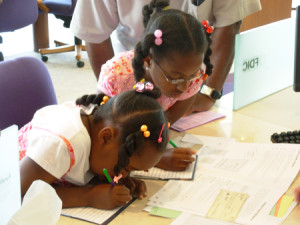Share This Article
During Financial Literacy Month, we’re focusing on the important concept of budgeting. In an earlier blog post, we provided resources to get youth started on mapping out a personal budget. We offered this worksheet and encouraged every reader to fill out the “Actual” column for expense and income. Next comes creating the on-going budget.
Important guidelines
Check out this quick overview of how to plan out a budget. This rule, the 70-20-10 rule, provides a guideline for how much everyone should be spending, saving, and giving.
Now that you have that in mind, let’s set a goal for those savings.
Use this worksheet with your kiddos to map out what they’re saving for. Setting a goal is an important step in creating a budget, because it helps kids see the end result of sticking to their budgets. If they go over-budget, they won’t have enough money to achieve their goal. This concept may be easy for many adults to grasp, but looking long-term is great for young ones to practice.
The end result
Finally, it’s time to set the true budget. Use the first column of this worksheet your kids have completed filled with their actual expenses. Once they complete the “Budget” column, you can start a new “Actual ” column for them so they can track their progress and success.
It will also be important to check in on a regular basis on the savings goal. Did the goal change? Did the price of the goal change? Did the time frame for reaching the goal change? If so, your kids may have to adjust their budgets to reach their goals.
Here are two more great resources to take a look at for planning out budgets:
We’d love to hear how your kids are doing on their budgets. Are these resources helpful? Tell us in the comments section below!





